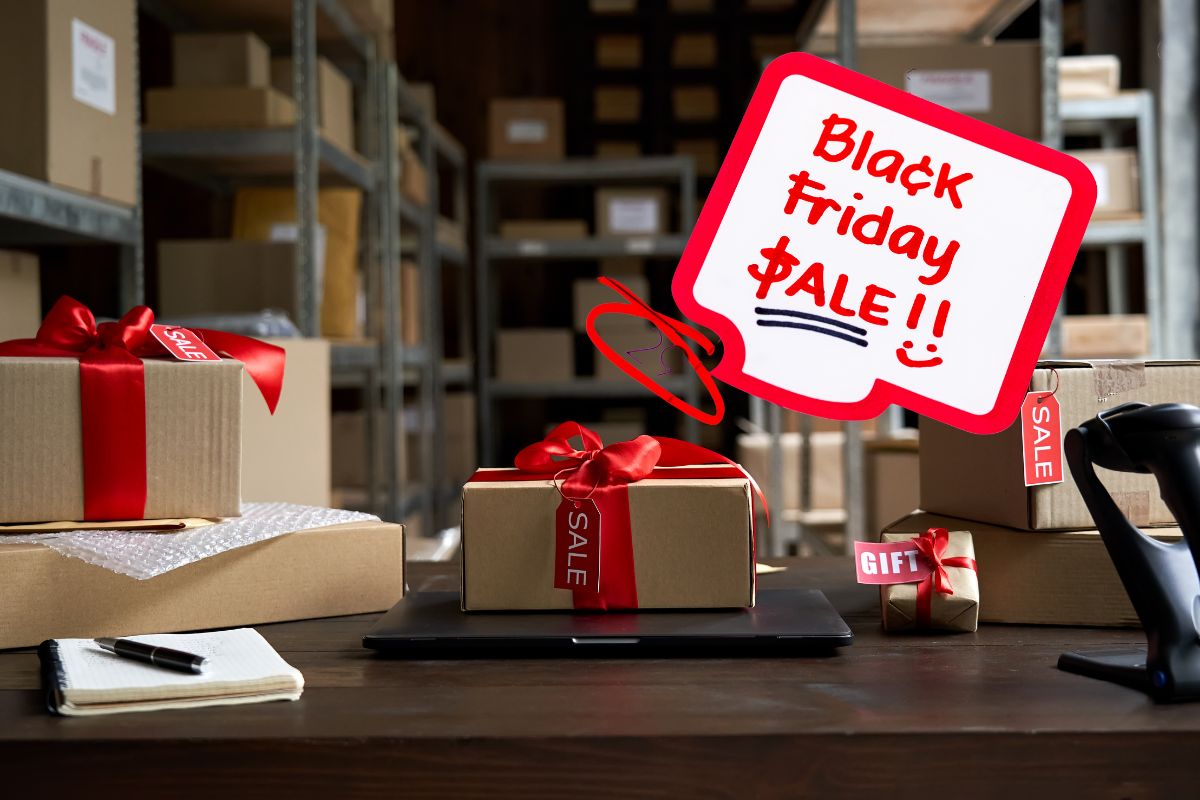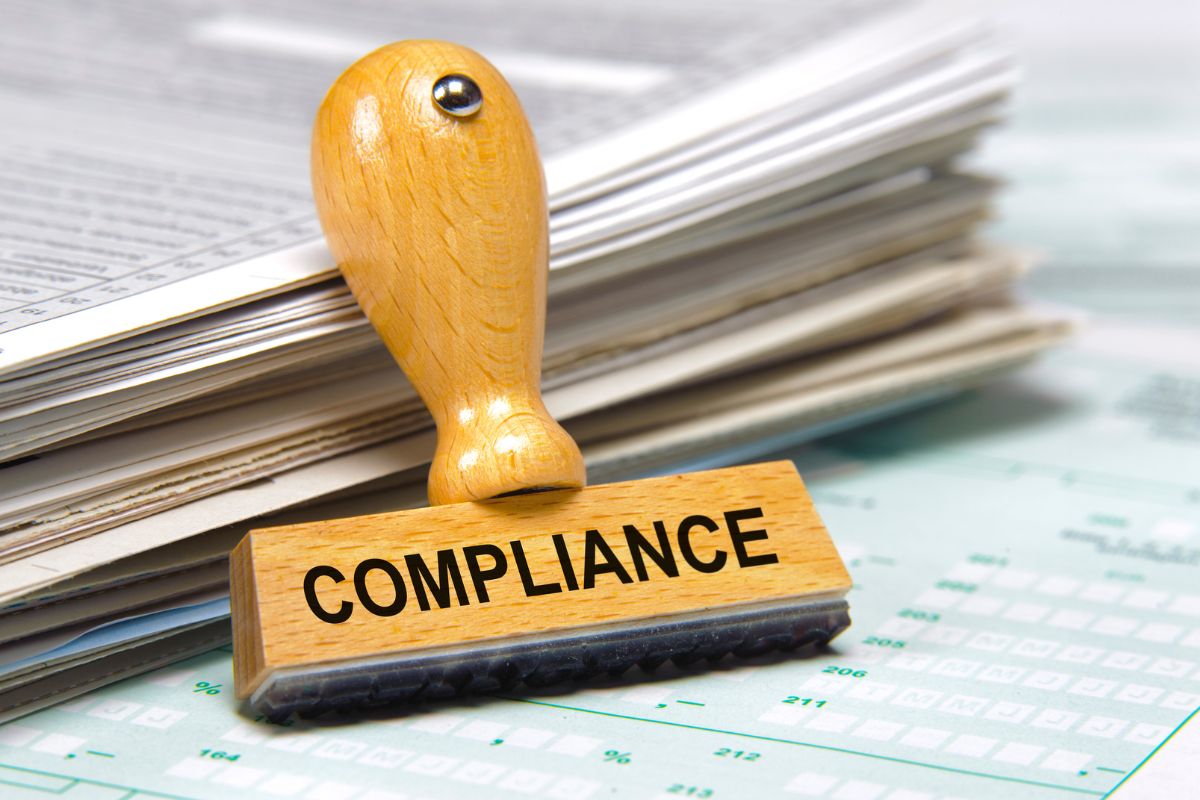Understanding the holiday e-commerce sales calendar is pivotal for maximizing your business’s performance during the most lucrative time of the year. The period from Thanksgiving through New Year’s is peppered with significant shopping events, starting with Black Friday, continuing through Cyber Monday, and ending with post-holiday sales. These key dates are crucial for online retailers, as consumer spending habits tend to peak, making strategic planning around them essential for capitalizing on increased traffic and sales potential.
Your success during the holiday season hinges on early preparation and awareness of the e-commerce calendar. This involves not only stocking up on inventory but also ensuring that your marketing and promotional strategies are aligned with consumer expectations. The rise of e-commerce sales during these periods reflects a broader trend of consumers favoring the convenience of online shopping, and adjusting your strategies accordingly can lead to substantial rewards.
By leveraging insights from past holiday sales, you can forecast demand more accurately and tailor your promotions to what resonates best with your customers. From understanding how an anomaly in the calendar can significantly influence online sales to anticipating the spike in demand due to the season’s promotions, staying informed will set you up for optimal results. Remember, an effective strategy requires more than just participating in the sales events; it’s about creating an experience that leaves a lasting impression on your customers long after the holidays have passed.
Understanding the Holiday Ecommerce Sales Calendar
Navigating the holiday ecommerce sales calendar effectively allows you to maximize your sales potential during the busiest shopping periods of the year. Your awareness of key dates and their significance is crucial to planning promotions and stocking inventory.
Significance of the Holiday Shopping Season
The holiday shopping season is a critical period for retailers, with a significant portion of annual sales transacted in just a few short months. Your understanding of consumer behavior during holidays like Thanksgiving, Black Friday, Cyber Monday, Christmas, and around New Year’s Eve is vital. These days not only drive high traffic to ecommerce sites but also influence purchasing decisions as customers look for special deals and promotions.
Key Dates in the Holiday Ecommerce Calendar
You must be aware of the following dates, which are typically the peaks in holiday ecommerce activity:
- Thanksgiving Day (Fourth Thursday of November): The holiday season unofficially kicks off with family gatherings that also include browsing for upcoming sales.
- Black Friday (Day after Thanksgiving): Traditionally the biggest retail shopping day of the year, it marks deep discounts and early-bird specials.
- Cyber Monday (Following Monday after Thanksgiving): This day is specifically tailored to online shopping with exclusive deals and promotions.
- Christmas Eve (December 24): A last-minute rush for gifts often leads to increased sales, especially for retailers offering expedited shipping options.
- Christmas Day (December 25): Some consumers take advantage of post-Christmas sales starting on this day.
- New Year’s Eve (December 31): The final rush of holiday sales, including promotions for New Year’s parties and preparations.
Bold these key dates in your marketing calendar, and plan your inventory and marketing efforts accordingly. Remember, each of these holidays has its unique shopping trends that you can leverage for targeted campaigns.
Preparation and Planning Strategies

When managing an ecommerce business during the holiday season, your approach to inventory management and marketing campaigns planning can make or break your success. Strategies designed to optimize inventory for peak shopping days and creative marketing campaigns tailored for festivities like Thanksgiving, Black Friday, Christmas, and Cyber Monday can leverage increased consumer demand and maximize sales.
Inventory Management
Your inventory is the backbone of your holiday sales; it’s critical to have the right products in the right quantities. Begin by analyzing past sales data around key holiday dates.
- Thanksgiving & Black Friday:
- Products: Stock up on trending items and customer favorites.
- Quantity: Increase inventory levels based on forecasted demand.
- Christmas & Cyber Monday:
- Evaluate supplier lead times to ensure restock procedures are timely.
- Implement safety stock strategies to avoid stockouts during unpredictable surges.
Remember to negotiate terms with suppliers in advance for volume discounts which can help manage costs during the high-volume sales period.
Marketing Campaigns Planning
You need a robust marketing strategy to attract customers and stay ahead of the competition. Each campaign should be unique to the holiday it targets.
- Thanksgiving – Launch campaigns expressing gratitude, perhaps offering special discounts to loyal customers.
- Black Friday & Cyber Monday – Plan for promotions and limited-time offers to create urgency.
- Christmas – Craft campaigns highlighting gift ideas, bundling products, and offering gift-wrapping services.
Create a marketing calendar with key dates and ensure that all promotional materials are prepared well in advance. Utilize email marketing, social media, and paid advertising to amplify your reach.
Key Points for Your Marketing Campaigns:
- Email Campaigns: Schedule ahead and segment your audience for personalized offers.
- Social Media: Engage with customers by sharing holiday-themed content and exclusive social media discounts.
- Paid Advertising: Allocate budget for targeted ads to capture high-intent traffic.
In planning your ecommerce calendar, precision and forethought are essential. By managing your inventory smartly and crafting engaging marketing campaigns, you set your business up for a profitable holiday season.
Maximizing Major Holiday Sales

To capitalize on holiday ecommerce sales, your calendar must align perfectly with peak shopping times like Black Friday and New Year’s Eve. Prepare for these high-traffic periods by planning promotions and optimizing your online store’s performance to ensure you meet the demands of holiday shoppers.
Black Friday and Cyber Monday
Black Friday, the day following Thanksgiving, launches the holiday shopping season with significant discounts enticing a surge in sales. Your strategy should include early promotions and teasers leading up to the event. On Cyber Monday, which follows immediately after, exclusive online deals are key. Ensure your website can handle increased traffic and consider free shipping to heighten the appeal.
- Preparation Checklist:
- Optimize website speed and checkout process.
- Plan doorbuster deals to attract early shoppers.
- Schedule email campaigns with exclusive offers.
- Enhance customer support for the sales period.
Christmas and New Year’s Sales
The period between Christmas and New Year’s presents a golden opportunity to clear out inventory with end-of-year discounts. Leverage the festive spirit and the urge for gift-giving by offering bundle deals. As New Year’s Eve approaches, capitalize on resolutions and self-improvement trends by promoting relevant products.
- Marketing Moves:
- Bundle products for Christmas gifting.
- Create urgency with limited-time offers.
- Target New Year’s resolutions with appropriate product deals.
Other Significant Holidays
Don’t miss out on other holidays like Valentine’s Day and Mother’s Day, where personal and thoughtful purchases peak. Halloween and Labor Day also offer unique themed-sales opportunities. Each holiday poses unique triggers for consumer spending; it’s imperative to tailor your promotions accordingly.
- Holiday Highlights:
- Valentine’s Day: Highlight romance with special offers on jewelry and chocolates.
- Mother’s/Father’s Day: Promote gifts appreciating parents with personalized deals.
- Halloween: Spook-tacular discounts on costumes and party supplies can boost your October sales.
- Easter: Use this spring holiday to introduce new products suitable for the season.
By meticulously planning your ecommerce holiday calendar and crafting holiday-specific promotions, you can maximize sales across the year’s busiest shopping days.
Marketing Tactics for Ecommerce Success
In the competitive world of ecommerce, leveraging targeted marketing tactics is essential for the success of your holiday sales. By focusing on impactful social media strategies and personalizing your email marketing, you can engage your customers more effectively.
Social Media Strategies
Understanding the power of social media is crucial in expanding your target audience and boosting your marketing efforts. Develop a content calendar that aligns with key shopping dates and centers around enticing gift guides to capture consumer interest. Consider the following:
- Use bold visuals and hashtags related to holidays to increase visibility.
- Engage with your community through interactive polls or contests.
- Partner with influencers who resonate with your brand to reach wider audiences.
Email Marketing and Personalization
Personalization in email marketing can markedly increase customer loyalty and conversion rates. Your subject lines should be eye-catching and tailored to your consumers:
- Segment your customer lists to deliver personalized recommendations and exclusive offers.
- Design emails with a clear call-to-action and ensure they are mobile-friendly.
- Utilize customers’ purchase history to suggest relevant products, heightening the sense of personalization.
Leveraging Promotions and Discounts

To maximize your ecommerce success, strategically orchestrated promotions and discounts can significantly impact sales during key holiday periods. An understanding of how to effectively deploy these incentives can translate into heightened sales figures and a bolstered bottom line.
Seasonal Promotions
Back-to-School and Halloween offer prime opportunities for tailored promotions. For example, in August, consider offering bundle deals on school supplies and clothing. As October approaches, themed discounts on costumes and decorations can entice shoppers.
- Back-to-School:
- Create bundles for common school items.
- Offer a “Buy One, Get One” on select apparel.
- Halloween:
- Provide early bird specials on costumes.
- Roll out themed discount codes, such as SPOOKY15 for 15% off.
Valentine’s Day requires a more nuanced approach, focusing on gifts that convey affection. Exclusive discounts on jewelry or limited-time offers on romantic getaways can drive impulse buys.
Special Event Flash Sales
Flash Sales should create a sense of urgency. Use countdown timers on your website and create email blasts that alert your customers to the limited time they have to snatch up deals.
- Black Friday:
- Plan doorbuster deals that reward the first online customers.
- Release hourly discounts on different product categories.
- Cyber Monday:
- Extend Black Friday promotions with new Cyber Monday exclusives.
- Offer larger discounts on technology and high-ticket items.
Considerations for Flash Sales:
- Limit the quantity of discounted items to enhance exclusivity.
- Promote upcoming sales across social media and through email newsletters to build anticipation.
By harnessing these strategies for seasonal promotions and flash sales, you can effectively leverage discounts to boost customer engagement and drive sales during key holiday periods. Remember, your goal is to create valuable offers that align with your customers’ holiday shopping needs.
Target Audience Understanding

To maximize the effectiveness of your holiday ecommerce sales initiatives, it’s crucial to deeply understand your target audience. This involves unpacking their unique behaviors during the holiday season and implementing holiday-specific strategies to engage them.
Consumer Behavior Insights
By analyzing consumer behavior insights, you’re able to anticipate your customers’ needs and tailor your marketing efforts accordingly. Surveys can be pivotal in grasping these behaviors—take the time to understand what drives your customers around holidays. For instance, during Thanksgiving, there’s a trend where consumers look for deals on items for the home to host gatherings effectively. In turn, these insights should shape your social media campaigns to resonate with your audience’s seasonal needs.
- Black Friday sees a surge in seeking tech and electronic bargains.
- Christmas shopping often revolves around personal and thoughtful gifts.
Keeping tabs on such nuances allows for fine-tuned marketing strategies that hit the right nerve at the right time.
Holiday-Specific Targeting
When it comes to holiday-specific targeting, timing and message are everything. Aim to align your promotions with the holiday calendar—be precise and create a sense of urgency.
- Thanksgiving: Launch campaigns that promote your role in facilitating a memorable family holiday.
- Black Friday: Use bold and urgent language to promote once-a-year deals.
- Christmas: Capitalize on emotions with messaging that evokes warmth and generosity.
It’s also effective to employ different strategies for different segments of your target audience, recognizing that consumers’ holiday shopping motivations can vary greatly.
By placing your buyer at the center of your holiday ecommerce strategies, you’re more likely to secure their loyalty and see a positive impact on your sales.
Calendar-Specific Marketing Implementation

When planning your e-commerce promotions, it’s crucial to align your marketing tactics with specific holidays and observances throughout the year. This synchronized approach ensures maximum engagement and takes advantage of increased consumer activity.
Monthly Breakdown of Holidays
January:
- Kick off with New Year’s Day promotions.
- Capitalize on Martin Luther King Jr. Day with themed content.
February:
- Valentine’s Day drives gift purchases. Offer special deals.
- Include Presidents’ Day sales for home goods and electronics.
March:
- St. Patrick’s Day promotions can boost sales with themed products.
- Look for International Women’s Day for empowerment-related campaigns.
April:
- Easter offers opportunities for family-oriented marketing.
- Engage eco-conscious consumers on Earth Day.
May:
- Mother’s Day is key for gifts and special experiences.
- Memorial Day weekend marks the start of summer sales.
June:
- Father’s Day is the counterpart to Mother’s Day in sales potential.
- Pride Month and Juneteenth can be pivotal for inclusive marketing.
July:
- Independence Day promotions can offer summer merchandise discounts.
- Don’t overlook Amazon Prime Day for competitive deals.
August:
- Prepare for the Back-to-School season with targeted campaigns.
- National Women’s Day could tie in with female-centric products.
September:
- Labor Day deals can draw attention to autumn collections.
- First Day of Fall is perfect for seasonal decor and fashion.
October:
- Halloween is ideal for costume and decoration promotions.
November:
- Veterans Day acknowledges service with patriotic themes.
- Thanksgiving, Black Friday, and Cyber Monday are pivotal for holiday sales.
December:
- Hanukkah, Christmas, and Kwanzaa dominate gift shopping.
- New Year’s Eve offers last chances for end-of-year deals.
Marketing Calendar Planning
- Begin with a yearly calendar. Identify key holidays for your brand and audience.
- Plan your campaigns around these dates, considering buying behaviors and historical sales data.
- Campaign start dates should precede holidays, offering ample time for consumers to shop.
- Decoration themes must evolve with each holiday, ensuring your store stays visually fresh and engaging.
- Utilize giveaways and special promotions on less-known observances, like National Pizza Day or World Book Day, to stand out.
- Sales forecasts should incorporate holiday-specific influences, such as increased spending during Christmas or deal-seeking on Black Friday.
- Carefully consider inventory and logistics for high-volume times like Back-to-School season and Cyber Monday.
- Seamlessly integrate global observances, including Lunar New Year, Diwali, or Ramadan, to cater to diverse customer segments.
- Use historical data to refine your marketing budget allocation, optimizing for the most profitable holidays such as Mother’s Day, Father’s Day, and Valentine’s Day.
- Keep an eye on new and emerging trends, such as the rise in popularity of Small Business Saturday or Amazon Prime Day.
- Ensure all campaigns are mobile-optimized as consumer buying habits continue to shift towards mobile transactions, especially for time-sensitive offers like on Cyber Monday.
Follow these guidelines to craft a robust marketing calendar that aligns with holiday trends, anticipates consumer demand, and boosts your sales throughout the year.
Analyzing and Adapting to Market Trends

In the rapidly shifting landscape of ecommerce, your success during the holiday season hinges on understanding market trends and making swift adaptations. This involves keen competitor analysis and recognizing evolving consumer needs.
Competitor Analysis
To stay ahead, you need to closely monitor your competitors. This not only includes price comparisons but also gauging their marketing efforts and holiday promotions. Assess their social media engagement to understand how they are building brand awareness. Pay special attention to who offers free shipping, as this is a major decision factor for customers during the holidays.
Evolving Consumer Needs
Consumers’ preferences change, particularly with clothing and food items during the holiday season. Stay current by analyzing purchase behaviors and adapting your inventory accordingly. Utilize ecommerce analytics to pinpoint these trends and update your online shopping platform to meet these changing demands. Effective adaptation means strategically planning marketing efforts and product selections to maximize revenue.
Remember, it’s not just about what you sell, but how you sell. Harness social media to communicate with consumers, both to inform them of what’s available and to listen to their wishes. Your ecommerce business must be proactive in adapting to these discussions to truly tap into the holiday market’s potential.
Building Lasting Customer Relationships

Building enduring customer relationships is critical for holiday ecommerce success. Your focus should be on developing loyalty programs that encourage repeat business and crafting post-holiday engagement strategies that keep your brand top-of-mind.
Loyalty Programs and Customer Retention
Loyalty programs are a powerful tool to boost customer retention. By offering a loyalty program, you give your customers incentives to continue shopping with your brand.
- Points System: Consider a points-based system where customers earn points for every purchase, which can be redeemed for discounts or special gifts.
- Tiered Rewards: Implement tiered levels within your loyalty program to encourage higher spending. The more your customers spend, the greater rewards they receive, such as access to exclusive sales or free shipping.
Engaging your customers through these programs not only drives sales but also fosters a sense of belonging to your brand community.
Post-Holiday Engagement Strategies
After the holiday rush, it’s essential to keep the momentum going. Here’s how you can engage your consumers:
- Personalized Email Campaigns: Send personalized emails updating your customers on upcoming deals or new product releases. Use data from their holiday shopping behavior to tailor the messaging.
- Customer Feedback Surveys: Ask for their opinions on their holiday shopping experience. This shows that you value their input and are committed to improving.
Remember, the goal is to maintain a dialogue with your customers, keeping your brand fresh in their minds and priming them for future purchases.
Optimizing Ecommerce Platforms
In the bustling holiday season, your ecommerce business can thrive by enhancing the online shopping experience and ensuring seamless mobile accessibility. Paying close attention to these areas can significantly impact consumer satisfaction and sales figures for clothing, gifts, and various holiday necessities.
Website User Experience
Your website is the digital storefront for your brand, so user experience (UX) is paramount. To ensure that consumers can easily find and purchase holiday gifts, consider the following:
- Navigation: Use clear, intuitive menus that help customers find items quickly.
- Search Functionality: Implement a robust search engine with filters to narrow down choices by size, color, and style for clothing and other holiday items.
- Page Loading Speed: Keep your website running smoothly by optimizing images and using content delivery networks (CDNs) to reduce loading times.
- Checkout Process: Simplify the checkout process to a few steps, providing multiple payment options and clearly displaying return policies.
Mobile Shopping Optimization
With more customers turning to their smartphones for online shopping, optimizing your ecommerce site for mobile is non-negotiable.
- Responsive Design: Ensure your site automatically adjusts to any screen size, providing an optimal viewing experience.
- Touchscreen Navigation: Design your site’s mobile version with large, easily clickable buttons to accommodate touchscreen navigation.
- Mobile Payment Options: Integrate popular mobile payment systems to expedite checkout for on-the-go consumers.
By following these guidelines, your ecommerce platform can deliver a competitive and satisfactory shopping experience during the high-stakes holiday season.
Post-Season Analysis and Improvement

The end of the holiday season is a crucial period for your ecommerce business to gain insights and pave the way for future success. Using post-season data, you can refine your marketing strategies and product offerings to better meet the needs of consumers.
Sales Data Review
Begin with a comprehensive review of your sales data. This includes:
- Total Sales: Assess the overall revenue, highlighting top-performing products.
- Sales Trends: Identify which days and promotions yielded the highest sales figures to determine the most effective marketing campaigns.
- Product Performance: Understand which new products succeeded and what can be learned about your consumers’ preferences.
- Customer Demographics: Analyze who made purchases, adjusting future marketing to target your core audience more accurately.
Feedback Incorporation into Future Planning
Next, turn customer feedback into actionable strategies:
- Gather Feedback: Collect reviews and survey responses to gauge customer satisfaction.
- Identify Patterns: Look for recurring themes in feedback that can inform changes in your product lineup or customer service approach.
- Adjust Marketing: Refine your marketing strategies based on what resonated with consumers, investing more in high-ROI channels.
- Product Development: Use insights to guide the development of new products or the improvement of existing ones, ensuring they align with consumer needs.
By diligently analyzing your post-season performance and integrating feedback into future planning, you establish a cycle of continual improvement for your ecommerce business.
Sector-Specific Strategies
In the realm of e-commerce holiday sales, timing and tailored approaches can significantly impact your bottom line. Each sector has its critical moments and strategic nuances when consumer interest peaks, such as Black Friday for electronics or Christmas for clothing and home decor. Adapting your promotional calendar to these sector-specific windows will leverage consumer behavior to your advantage.
Clothing and Apparel
When it comes to Clothing and Apparel, Black Friday and Cyber Monday are crucial for driving sales. Your strategy should include early teaser campaigns and exclusive deals for email subscribers to create buzz. Capitalize on the festive season by thematically aligning your product offerings with Christmas trends and holiday party fashion. Remember, limited-time offers can create urgency, so schedule flash sales strategically.
Electronics and Gadgets
For Electronics and Gadgets, brand partnerships can enhance your Black Friday and Cyber Monday promotions. High-ticket items like smartphones and gaming consoles often see a surge during these sale events. Aligning your discount strategies with consumer expectations for tech deals in this period is key. Offering bundle sales can also entice customers looking for comprehensive value during the holiday rush.
Home Decor and Furnishings
Home Decor and Furnishings see a rise in sales around both Christmas and Easter seasons as consumers look to refresh their spaces. Emphasize product visuals with thematic staging that resonates with holiday home aesthetics. Incorporating a gift guide on your website can guide customers towards matching products and increase average order values. Use email marketing to offer decoration tips, linking back to your products to drive sales.
Creating a Unique Selling Proposition

In the competitive holiday market, your unique selling proposition (USP) is the key differentiator that sets your brand apart. It should highlight the unique benefits and value that only your products can offer to consumers.
Differentiation in Market
Your ability to stand out relies on identifying a niche or an aspect of your product that is not being fully exploited by competitors. Consider crafting gift guides that align with your USP to make the product selection process simpler and more appealing. This tactic not only boosts brand awareness but also positions your brand as a go-to source for specific holiday needs.
Branding and Value Addition
Effective branding enhances your USP by weaving a consistent narrative around your products. This narrative should resonate with your target audience, creating a strong emotional connection. Emphasize the value addition your products bring, such as superior quality or ethical sourcing, which can justify a price premium. Your marketing efforts, including both digital and traditional channels, should consistently communicate this value to nurture a loyal customer base and drive sales.
Aligning with Cultural and Social Movements
In the realm of holiday e-commerce sales, aligning your marketing calendar with cultural and social movements can create a sense of community and bolster brand loyalty. By recognizing important dates and events, you demonstrate your brand’s commitment to social relevance and inclusiveness.
Inclusive Marketing Approaches
As an e-commerce business, it’s essential to embrace inclusivity in your marketing campaigns. Take Women’s History Month and International Women’s Day as key opportunities to celebrate achievements and advocate for gender equality. Feature products and stories that resonate with women, showcasing how your brand aligns with their values and aspirations. Similarly, during Pride Month, showcase your support for the LGBTQ+ community through themed promotions and partnerships with LGBTQ+ organizations.
An inclusive e-commerce calendar also means recognizing events significant to diverse communities, such as Martin Luther King Jr. Day, Juneteenth, and Ramadan. These observances are not merely dates but opportunities to connect with African Americans, Muslims, and other communities through specially curated content and offers.
Supporting Social Causes
When you support social causes, you’re telling your customers that your brand stands for more than just profit. Acts of kindness shouldn’t be limited to one day of the year, like Get to Know Your Customers Day, but integrated consistently into your business practices. Demonstrating support for movements that promote equality can boost customer loyalty and differentiate your brand within the crowded e-commerce space.
Consider creating limited-edition products for events such as spooky-themed items for Halloween or products that honor African American culture for Juneteenth. Proceeds from these sales can go towards related causes or charities, tangibly showcasing your brand’s commitment to these social issues. Also, remember smaller, yet impactful observances, such as World Kindness Day, where you can engage with your audience through gestures of goodwill and special promotions.
By putting these targeted strategies into action, your e-commerce business becomes a positive force that resonates with customers year-round.
Utilizing Data and Analytics

In the dynamic world of ecommerce, data analytics serves as your compass, directing your brand through the bustling holiday periods. By finely tuning your sales and marketing strategies with rigorous analysis, you set your ecommerce business up for success.
Sales Forecasting
To anticipate demand and plan inventory, dive into data-driven sales forecasting. You need to analyze historical sales data, consider current market trends, and factor in variables such as holidays and seasonal consumer behavior. By examining the effect of weather on ecommerce operations, you can even fine-tune your forecasts to adapt to external factors, ensuring that you maintain optimal stock levels and pricing. For instance, use the insights from past holiday sales peaks to predict future surges and plan your inventory and promotions accordingly.
Customer Journey Analytics
Understanding your customers’ journey is vital for creating personalized experiences. With customer journey analytics, you can trace the path consumers take from awareness to purchase, identifying key touchpoints that influence their buying decisions. Consider A/B testing to optimize your ecommerce site’s performance as described in research on A/B testing in ecommerce search. Utilize these insights to tweak your marketing strategies, improving conversions, and ultimately, boosting holiday sales.
Evaluating Logistics and Fulfillment
As you navigate the complex terrain of the holiday season, an in-depth evaluation of your logistics and fulfillment strategies becomes crucial for maintaining customer satisfaction and achieving profitable sales.
Efficient Shipping Strategies
To ensure your ecommerce business thrives, adopt efficient shipping strategies that align with consumer expectations. Free shipping has evolved from a luxury to a near necessity during the holidays. By integrating this option, you’ll likely see an increase in completed purchases. Maintain a transparent and real-time inventory system to tackle the surge in online shopping, keeping a close eye on stock levels to match the ebb and flow of holiday sales.
Handling Returns and Exchanges
After the holiday rush, handling returns and exchanges with finesse can solidify your brand’s reputation for customer service. Clearly communicate your returns policy and set up a straightforward process for customers. By preemptively planning for returns, you keep the post-holiday chaos under control and ensure that you retain customer trust, paving the way for repeat online shopping experiences in the future.
Ensuring Legal and Ethical Compliance

When handling holiday ecommerce sales, your obligations extend beyond merely boosting revenue. You must navigate the complex landscape of legal and ethical standards that protect both your brand and consumers.
Data Privacy Regulations
Your ecommerce business collects and processes customer data with every online transaction. It’s essential that you understand and adhere to data privacy regulations that govern your operations. The General Data Protection Regulation (GDPR), for instance, affects your conduct if you serve customers in the European Union. This law mandates obtaining explicit consent for data collection and allows consumers the right to access or delete their information.
- Keep records of all data processing activities.
- Ensure transparent data collection practices by clearly informing customers how their data will be used.
Likewise, if your business is based in California or deals with Californians, the California Consumer Privacy Act (CCPA) imposes similar obligations:
- Provide a clear “Do Not Sell My Personal Information” link if you do sell consumer data.
- Guarantee data access and deletion requests are honored within the stipulated timeframe.
Advertising and Promotional Laws
Your advertising strategies must comply with laws designed to prevent deceptive practices and protect consumers. False claims about products or misleading price promotions during the holiday season can violate The Federal Trade Commission (FTC) guidelines for ecommerce businesses.
- Clearly display Terms and Conditions of promotions.
- Avoid misleading statements by using clear and concise language in your adverts.
The Truth in Advertising laws enforce that you are truthful in your marketing and that you have evidence to back up your claims.
- Ensure price comparisons in adverts reflect savings realistically and are not deceptive.
- Disclose any material connections to endorsed products or services, including sponsorships or affiliate links.
By adhering to these regulations, you create a trustworthy shopping environment that not only keeps your business on the right side of the law but also fosters long-term loyalty among your consumer base.
Collaboration and Partnerships

In the fast-paced world of e-commerce, effective collaborations and partnerships can significantly boost your holiday sales calendar. By aligning with the right entities, you can expand your reach and resonate with more consumers.
Influencer and Brand Collaborations
Leveraging influencer marketing can raise brand awareness and enhance your promotional efforts. When you partner with influencers, their followers become exposed to your brand, potentially increasing your customer base. For successful influencer and brand collaborations:
- Choose relatable influencers: Their audience should align with your target market for maximum impact.
- Create authentic content: Collaborate on campaigns that reflect both the influencer’s style and your brand values to avoid appearing forced or inauthentic.
Examples include limited-edition releases or holiday-themed items endorsed by influencers, which often lead to spikes in sales and social media buzz.
Strategic Business Alliances
Develop strategic business partnerships to complement your marketing campaigns and capture new audience segments. When you forge alliances with other businesses, consider the following for optimal synergy:
- Shared goals: Ensure that your partner shares a common objective for the collaboration, like increasing holiday sales.
- Mutual benefit: Both parties should gain value, whether it’s through shared resources, customer bases, or technology.
Through collaborations like Alibaba’s IT platform synergy on Singles’ Day, or the insights into partnership marketing as suggested by the Partnership Design Canvas, your success can be amplified. Holiday campaigns that leverage the strengths of each partner can lead to an expanded audience and better customer experiences.
Frequently Asked Questions
In this section, you’ll find targeted answers to common queries regarding building a sales calendar for holiday ecommerce, understanding peak sales periods, and strategizing for the upcoming 2024 holiday season.
How do I create an effective sales calendar for the holiday season in ecommerce?
To create an effective sales calendar, start by analyzing past sales data and identifying trends. Incorporate key shopping dates, plan promotions around them, and schedule your marketing efforts accordingly. Flexibility is crucial to accommodate last-minute changes and opportunities.
Which holidays historically drive the most sales in online retail?
Historically, Black Friday, Cyber Monday, and the period leading up to Christmas generate significant online sales. It’s also important to consider region-specific holidays and shopping events like Singles’ Day in China or Golden Week in Japan, which can be highly lucrative.
What are the key dates to consider when planning a retail marketing strategy for 2024?
Key dates for a 2024 retail marketing strategy should include Thanksgiving (November 28), Black Friday (November 29), Cyber Monday (December 2), and the weeks leading up to Christmas. Additionally, plan for Valentine’s Day, Mother’s Day, and back-to-school periods as they also influence consumer spending.
How can ecommerce businesses leverage holiday seasons for maximum revenue growth?
Ecommerce businesses can leverage holiday seasons by offering targeted promotions, creating holiday-specific content, providing exclusive deals to loyal customers, and using holiday themes in marketing campaigns. Streamlining the website experience and optimizing for mobile shopping are also critical.
What strategies should retailers implement to optimize their sales during major holidays?
Retailers should implement early planning, inventory readiness, and engaging marketing campaigns. Also, consider offering exclusive deals, leveraging email marketing, utilizing social media, and providing excellent customer service to optimize sales during major holidays.
Can you suggest a comprehensive marketing calendar for the retail industry in 2024?
For a comprehensive retail marketing calendar in 2024, consider the traditional retail peaks like Black Friday and Cyber Monday. Additionally, include key e-commerce days like Amazon Prime Day, and don’t overlook niche holidays that align with your brand or consumer interests for targeted promotions.



